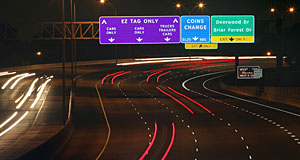Changes in road sign reflectivity will affect highway departments
The Federal Highway Administration (FHWA) has raised the minimum reflectivity of road signs to increase sign visibility, a mandate that will take effect in January 2012. FHWA standards require state and local agencies to assess their road signs and develop a replacement plan for non-compliant signs before the mandate deadline. During 2011, local and state governments will be working to devise plans to upgrade road signs that meet and exceed the minimum levels of retroreflectivity to improve road safety.

St. Paul, Minn.-based 3M Traffic Safety Systems has been implementing programs to aid local and state governments as they work to meet the FHWA’s standards. Govpro.com asked David Kniffin, marketing operations manager of roadway maintenance service at the 3M unit for his views. Kniffin is past chair of the American Traffic Safety Services Association’s Sign Committee.
Govpro.com: Does 3M have any advice for state and local government officials as they work to replace signs to meet new FHWA reflectivity requirements?
David Kniffin: Our advice to agencies that have yet to begin the process of implementing a compliance program is to start now. Even relatively small jurisdictions can have thousands, or even tens of thousands, of signs. It takes time and resources to assess signs and develop a management process — so the sooner an agency knows what they’re dealing with, the more time they have to structure a replacement plan and budget over several years.
A second piece of advice is to use signs made with higher grades of sheeting material, such as Type III or higher. Higher grades of sheeting may cost a little more upfront, but will save agencies money in the long term because the signs will exceed minimum retroreflectivity levels for a longer period of time. From a lifecycle perspective, the bulk of sign replacement cost goes into sign construction and installation. The sheeting is only a small piece of the total cost.
Govpro.com: Are there any important resources local and state government administrators can use as they begin to replace signs in their communities?

DK: One of the most comprehensive resources we’ve seen is a Sign Retroreflectivity Toolkit that is available online from the FHWA. It contains information and advice about the new traffic sign retroreflectivity requirements, steps to implementation (with an interactive budgeting tool), funding, technical and educational resources, sample forms and letters, and more.
Govpro.com: How is 3M assisting agencies with compliance?
DK: We aid agencies in several ways. First, 3M offers high-performance prismatic reflective sheeting that (for most traffic sign applications) is warranted to exceed minimum retroreflectivity requirements for 10 to 12 years. Second, 3M has introduced a secure, web-based Sign Management System that is reliable, easy to use, cost effective and adaptive to agency needs. In addition, 3M Roadway Maintenance Services can act as an extension of agency staff to get a sign management program off the ground, assisting with everything from inventory and assessment to fabrication and replacement of traffic signs. Agencies should contact their 3M representative for more information and assistance, or visit the Traffic Safety Systems site.




















